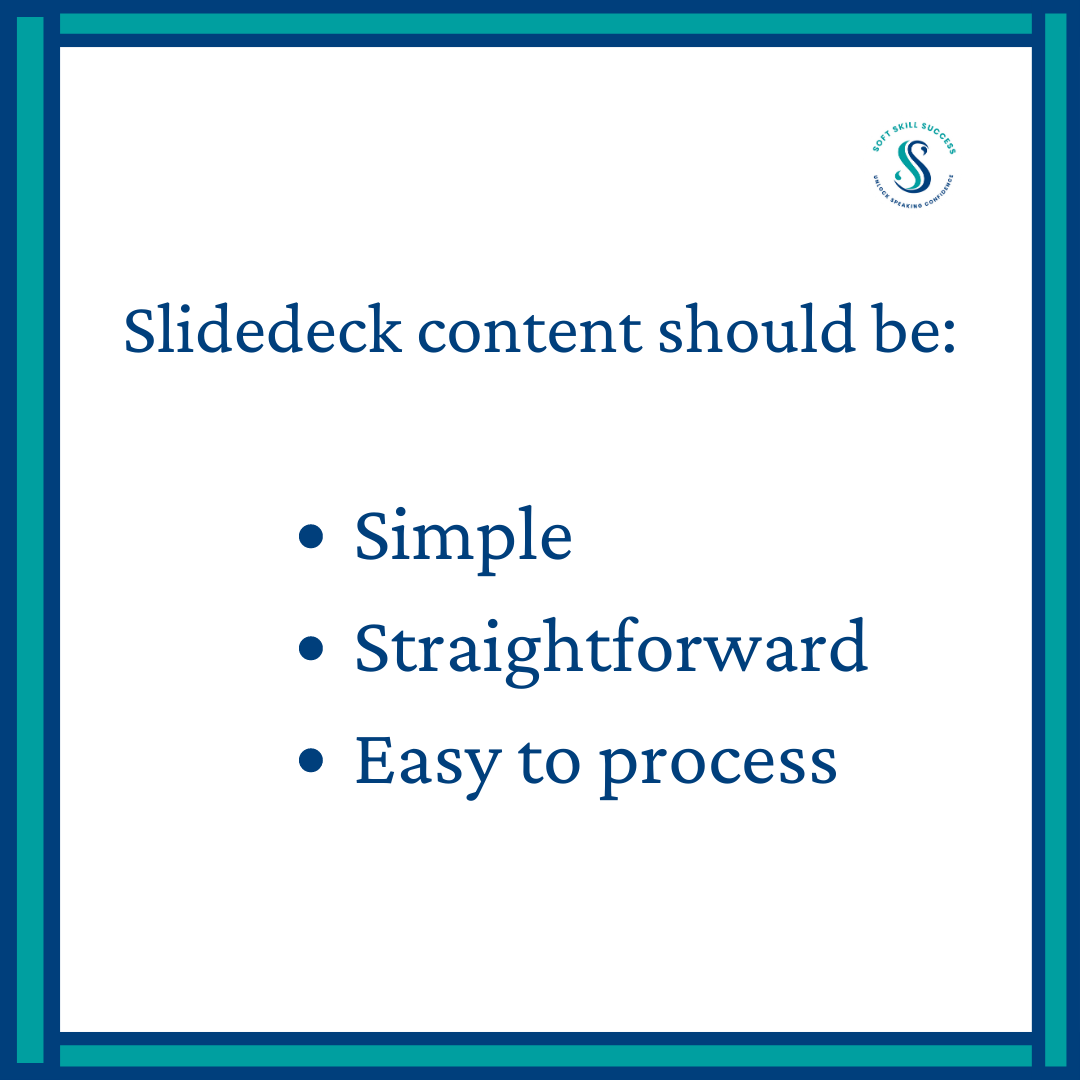3 Essential Questions to Help You Deliver a Powerful C-Suite Presentation
When you’re making a presentation to the C-Suite executives at your organisation (CEO, CFO, CTO etc.), the pressure’s on to make an excellent impression. You want to come across as confident, competent, and in control.
But it's not about you. It’s about the people who’ll be listening to your presentation.
It doesn't matter who you’re speaking to; the starting point is always the same. Know your audience. And when you’re presenting to senior executives, this is more important than ever.
Here are three key questions to consider to help you create and deliver a successful C-Suite presentation.
#1 - What do they want from the presentation?
You might have done a vast amount of research for this presentation and have lots of material you want to share. In the nicest possible way, your audience won’t want to know. At least, not about all of it. They're busy people, and time is short. So give them what they want by keeping your presentation at a high level.
Do they know why you’re speaking to them in the first place? If your presentation is to support the case for a decision, e.g. you’re seeking funding, then make sure you lead with that, so the purpose is immediately clear.
Start with the main recommendation and then continue with an overarching view of your key information. Keep this at the overview level, with backup data and details available to support your points if required. That way, if they have to head off to another meeting and only hear those bullet points, it’s ok. They’ve got the bones of your message and can follow up for more resources later if they need to.
And while we’re on the topic of keeping things concise, let’s talk about slides. To avoid overloading your audience, the content on your presentation deck should be:
Simple
Straightforward
Easy to process
Give people space to think through your ideas and process the information you’re sharing. The slides are the supporting element in your presentation, providing extra stats and context if necessary.
My S.L.I.D.E system will show you a simple way to create better slide decks: you can read more about that here: The S.L.I.D.E. System: Your 5-Step Guide to an Effective Pitch Deck
#2 - What do they care about?
When we listen to a presentation, we’re usually thinking:
“Why should I listen to this?”
“What’s in it for me?”
“Why should I care?”
Why should those in the C-suite care about your presentation? Take it back to what you know they’re interested and invested in - the strategic objectives of the company. How does what you want to say fit in with those objectives?
For example:
You’re presenting the case for a new CRM system for the sales team. You know that one of the organisation’s strategic priorities for next year is to improve customer retention. Connect the dots by emphasising how that system will set up a streamlined and enhanced customer experience, making it more likely that customers will become repeat purchasers.
For your presentation to make the desired impact, you need to create a connection between what you’re saying and what they care about.
#3 - How will they react?
One of the challenges my clients face when presenting to senior management is knowing there’s a good chance they’ll be interrupted. They don’t get the opportunity to say everything they want, because there are always lots of questions, which can end up stealing the allotted time.
If you think that’s how your presentation will go, you can prepare for that. When you’re practising out loud beforehand, think about how you’ll deal with those interruptions, so you don’t lose your train of thought when they happen.
If you’ve spent plenty of time internalising your content, you’ll be familiar enough with it that you can pick back up smoothly or jump forward to a different section to address a question.
It’s also a good idea to spend some of your prep time thinking about what those questions might be, so you can have your answers ready. That’s your chance to shine. Use the queries as a way to reinforce the points you’re making. If someone is asking a question, it means they’re interested in that particular topic, so take the opportunity to show off your expertise as you go into more detail with your answer.
For more tips on practising your presentation effectively, take a look at “4 Key Things to Focus on When Practising Your Presentation or Speech.”
A powerful presentation is your chance to make an impression
No matter who you’re speaking to, your audience should always be the primary consideration. But when you’re presenting to leadership, the three questions we’ve discussed here will help to maximise the impact of your presentation and increase your chances of obtaining the outcome you want from it.
Take this as your opportunity to showcase yourself with a clear, concise presentation that makes a compelling case and can influence the decision-makers in your organisation.
Hi!
I'm Maureen McCowen and I work with individuals and teams to help them unlock their speaking confidence.
To explore how this can support you or your team, email me or use the contact form here.
And if you’d like to receive a copy of these tips straight to your inbox, feel free to sign up here.


